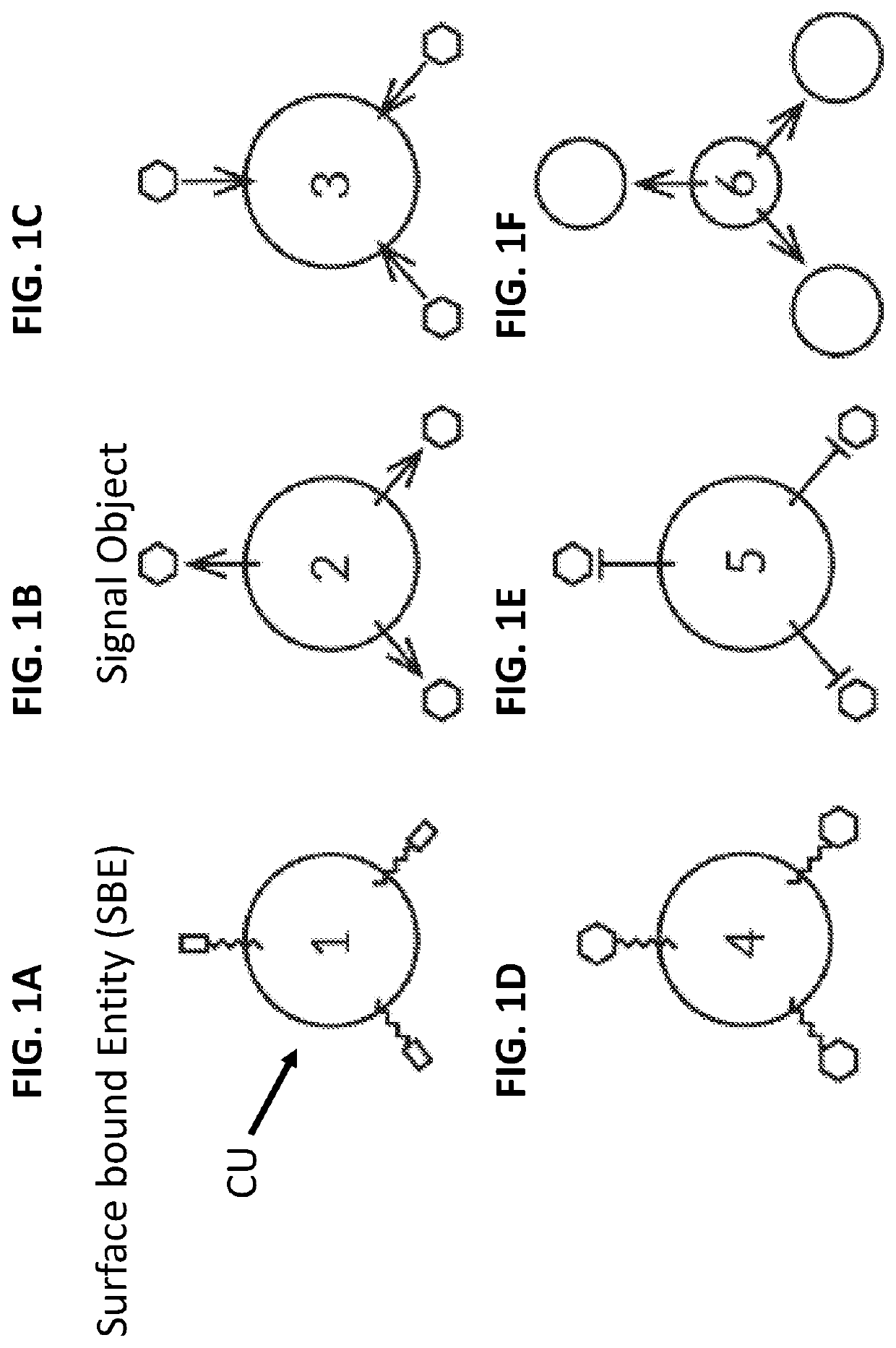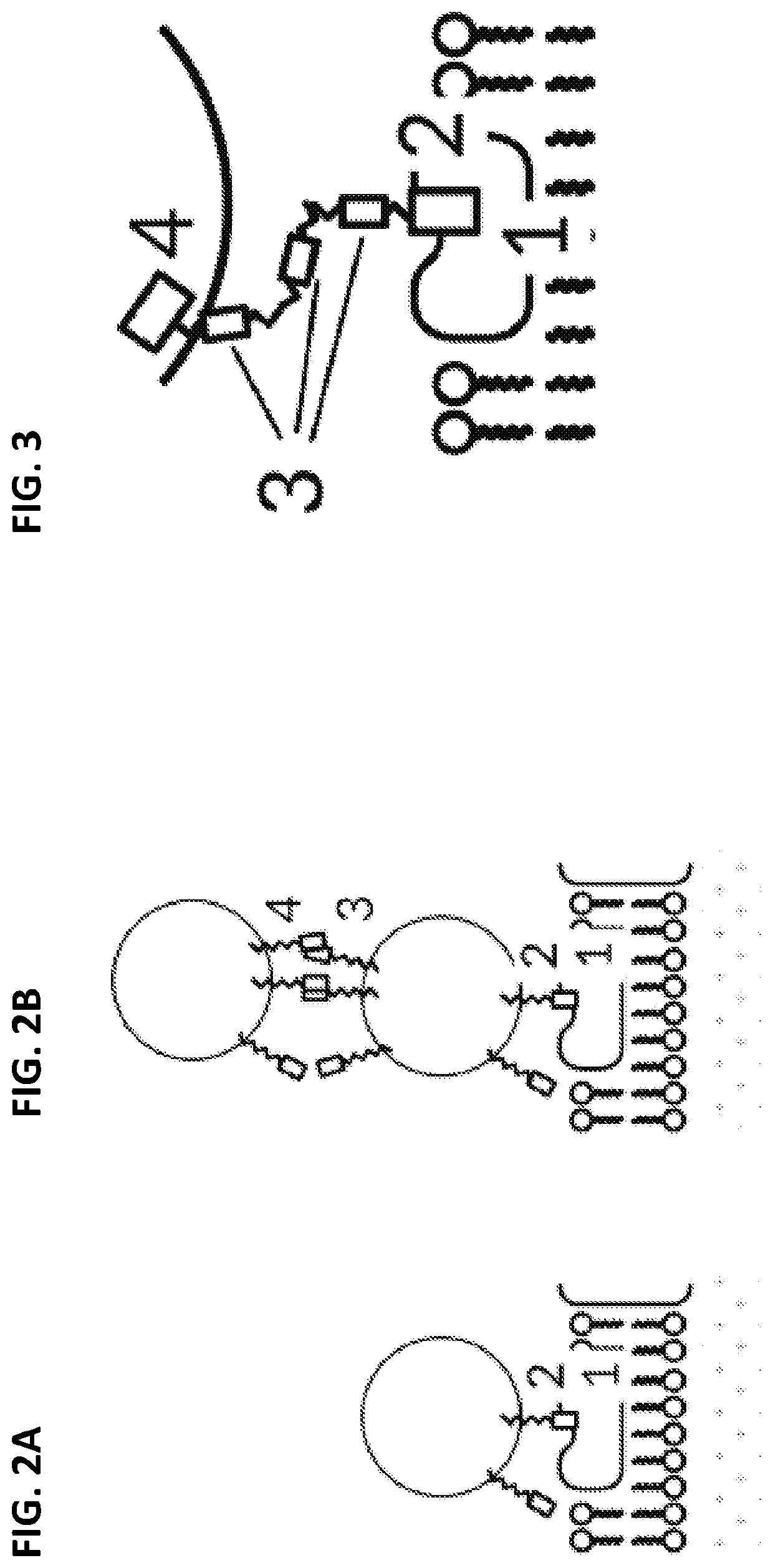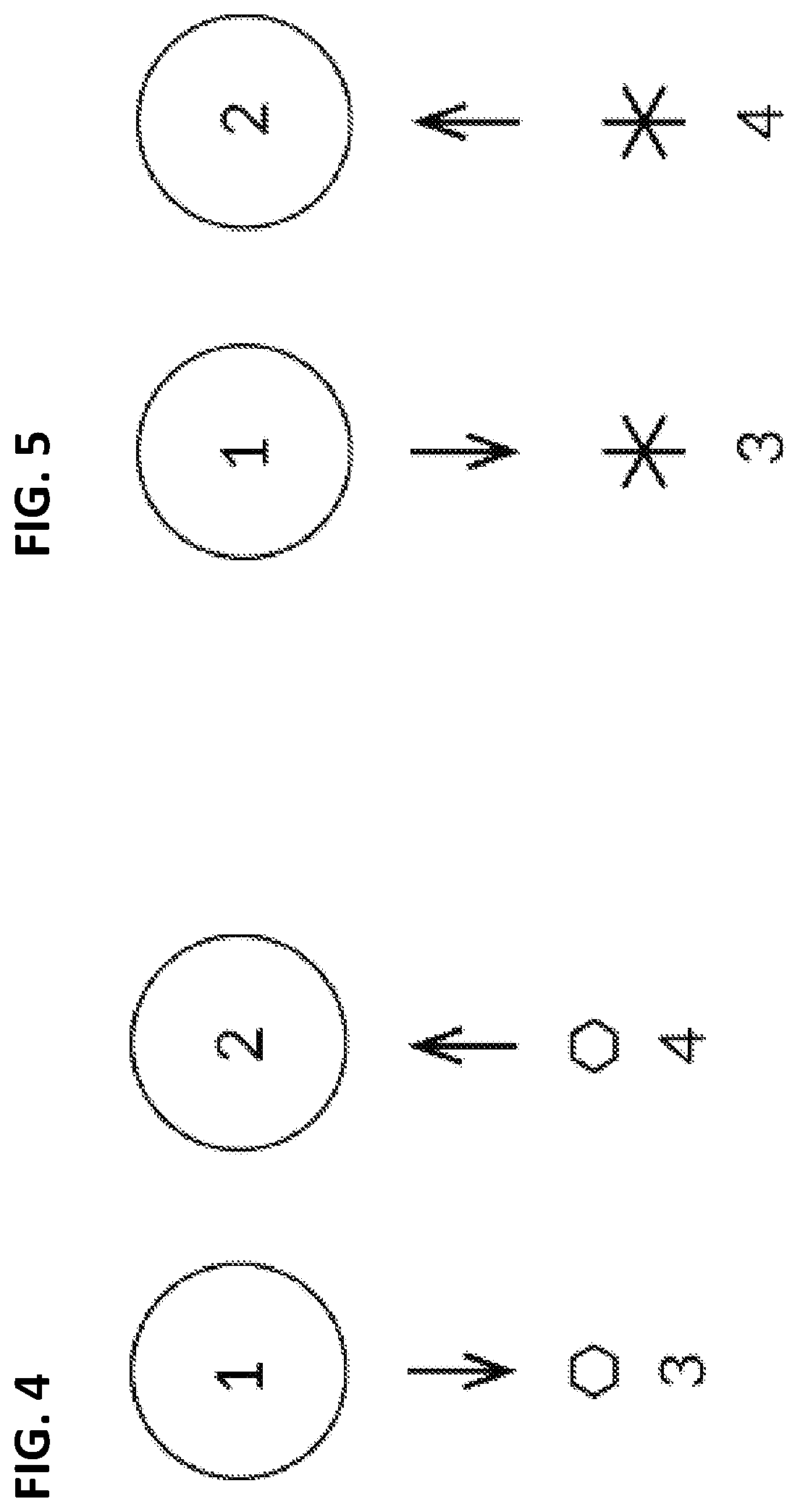Biological computing systems and methods for multivariate surface analysis and object detection
a computing system and multi-variable technology, applied in the field of biological computing systems, can solve the problems of inability to directly utilize immune computing systems in diagnostics, inability to detect immunological mechanisms, and insufficient simple immune mechanisms alone, so as to enhance the capability of the other cu to produ
- Summary
- Abstract
- Description
- Claims
- Application Information
AI Technical Summary
Benefits of technology
Problems solved by technology
Method used
Image
Examples
example 1
ay Specificity
[0343]The specificity of SBEs toward their cognate ligands was tested in agglutination assays involving antibody labeled agarose beads. Agarose beads covalently linked to anti-FLAG M2 antibodies (A2220 Sigma-Aldrich) were used as a potential agglutination partner for FLAGS CUs (sX216). Agarose beads covalently linked to anti-HA antibodies (26182 Thermo Fisher) were used as a potential agglutination partner for HEMA9 CUs (sX422).
[0344]All strains were grown overnight in yeast peptone dextrose medium (YPD) and diluted into synthetic drop-out complete medium (SDC) to 0.05 OD600 4 hrs before experiment. Prior to experiment cells were washed once in tris-buffered saline (TBS) containing 1% gelatin, washed a second time in TBS, and resuspended in TBS to 0.01 OD600. Agarose beads were washed once in TBS and resuspended in TBS to a final concentration of 20,000 beads / ml.
[0345]In a 1.5 ml microcentrifuge tube, 90 μl of cell mixture (sX216 or sX422) was combined with 10 μl (appr...
example 2
Quantification
[0346]Rate of nitrocefin hydrolysis was used to quantify the concentration of BLA reporter in the medium. Samples were then spun down at 5000 rcf for 5 min and 90 ul of the supernatant was mixed with 10 μl of 1 mM nitrocefin (484400 Sigma-Aldrich) into a 96-well microplate. The beta-lactamase concentration was quantified in a microplate reader at 37 degC by measuring absorbance at wavelengths 486 nm (A486) and 700 nm0700) every 2 minutes for 1 hour. One unit of BLA (1U) was defined as the amount of enzyme needed to degrade lnmol of Nitrocefin in 1 hour. In all experiments, the absorbance at 486 nm was normalized by subtracting the absorbance at 700 nm to compute absorbance difference (A) at each time instance
Δ(t)=A486(t)−A700(t) (1)
Substrate units denoted by Δ1U were quantified by completely degrading 1 nmol of nitrocefin and measuring the maximal value of Δ(t). The factor Δ1U was measured to be 0.03. The readout, i.e., beta-lactamase concentration, was then computed ...
example 3
Between Cellular CUs
[0347]Signaling between cellular CUs was demonstrated in a series of assays characterizing the dependence of signal transmission on the relative abundance of signal producing and signal recognizing CUs. In this study, the ratio of signal producing CUs to signal recognizing CUs was varied between 0 and 1 while the overall concentration of CUs was maintained at 0.05 OD600. This setup reflects CU signaling within an object cluster where the overall number of objects is constrained by cluster geometries but the relative representation of each object type may vary with the mixture composition.
[0348]All strains were grown overnight in YPD and diluted into SDC to 0.05 OD600 4 hrs before experiment. Prior to experiment cells were washed once in TBS containing 1% gelatin, washed a second time in TBS, and resuspended in TBS to 0.1 OD600. In each set of experiments, a signal producing strain (sX212, sX403, sX404, sX405, or sX406) was mixed in a 1.5 ml microcentrifuge tube w...
PUM
 Login to View More
Login to View More Abstract
Description
Claims
Application Information
 Login to View More
Login to View More - R&D
- Intellectual Property
- Life Sciences
- Materials
- Tech Scout
- Unparalleled Data Quality
- Higher Quality Content
- 60% Fewer Hallucinations
Browse by: Latest US Patents, China's latest patents, Technical Efficacy Thesaurus, Application Domain, Technology Topic, Popular Technical Reports.
© 2025 PatSnap. All rights reserved.Legal|Privacy policy|Modern Slavery Act Transparency Statement|Sitemap|About US| Contact US: help@patsnap.com



